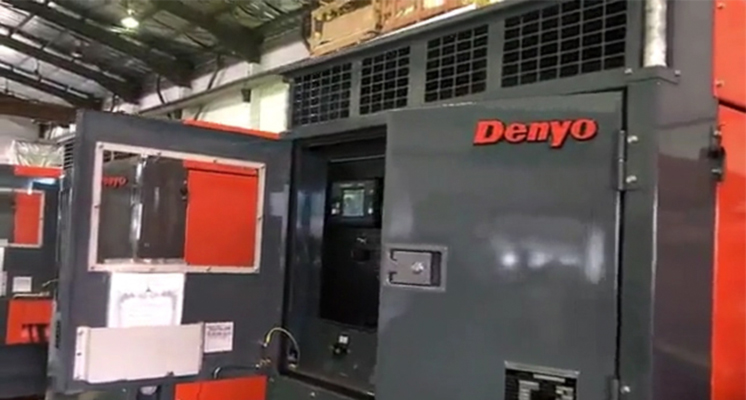Why AutoSync and Remote Monitoring Are Your New Best Friends In A Tunnelling Project

Tunnelling projects are tedious work, full of challenges and unexpected situations may arise anytime to derail your schedule, costing you valuable time, money and resources.
Not just strenuous on your manpower, inefficient or sub-optimal configuration and usage of your equipment in a tunnelling project can also cause hastened equipment deterioration and shorten their operational lifespans, creating further headaches down the road for your asset management.
Luckily there are 2 solutions that can help you alleviate these problems. Here’s why Automatic Synchronisation (“AutoSync”) and Remote Monitoring are your new best friends in a tunnelling project.
AutoSync
1. Load-dependent start/stop
In an AutoSync setup, the subsequent generator(s) within the group will be automatically started whenever the load demand is high. Conversely, when the load demand is low, the excessive running generator(s) will be automatically shut down. This allows for a greater usage optimisation of your equipment and eliminates power wastage as compared to a single high capacity generator.
You can even combine generators of different capacities in an AutoSync operation to extract further use out of your assets.
2. Greater redundancy
By having a group of many smaller generators, the designed network will have a significant increase in redundancy. This means that downtime of the power setup is much reduced. Besides being faster to deploy, you also have more flexibility in the way that you deploy, depending on the situation on the ground.
This allows you to use multiple smaller generator units to replace a larger one, which provides you more options in terms of maximising equipment usage.
3. Solve low loading issue in generator
Using a single big generator to support only a short inrush current when powering tunnelling equipment will cause the generator to operate in underload mode most of the time. In the long run, underloading of the generator causes oil leakage and carbon build-up at the exhaust outlet, eventually deteriorating the generator’s performance and drastically cutting its operational lifespan.
4. Better fuel saving
By spreading the over power supply to cater only to the power level demanded by the load, AutoSync immediately realises fuel savings to your operations. Less fuel consumption also means a reduced occurrence of pollution, which further adds to your advantage in terms of credibility with customers and compliance with relevant government authorities.
5. Ease of troubleshooting
With a smart controller as part of the AutoSync setup, your technicians can troubleshoot and identify problems much easier and faster whenever your customers face an issue. Generator downtimes are also noticeably shortened in such situations. Overall, it gives credence to your ability to provide quick response to customers whenever called upon.
This is especially useful when you need to deploy to remote locations or support large-scale events.
Remote Monitoring
1. Get insights on how to improve
Performance data of individual generators can be retrieved easily via a remote monitoring system, which helps you analyse and improve current processes that allow you to be more and more efficient and effectively moving forward. This raises the return on investing in the generators.
The data also helps in your daily reporting needs and documentation requirements for warranty claims.
2. Pre-emptive troubleshooting
With a remote monitoring system, you can now perform pre-emptive troubleshooting before the start of the project. This allows you to identify potential issues and nip them in the bud before they manifest into much bigger problems in the midst of the project. This, in turn, helps you avoid incurring expensive penalties that usually kick in when the tunnelling work gets delayed.
3. Automated monitoring
A lot of manual work is involved to diligently inspect each active generator and record the readings, be it for reporting or auditing purposes. This becomes a very heavy toll on the manpower when a large number of generators and projects are involved. With the remote monitoring system, all the recording is done in pre-configured regular intervals automatically and with perfect accuracy. Productivity is significantly improved.
4. Improved communications
A remote monitoring system that as a built-in communication channel can help make interaction among your service personnel and with the generator vendor much more efficient and effective. The ability to instantly message the relevant parties and clarify or troubleshoot a problem in real-time creates an enormous boost in your response time to your customers when issues surface.
5. Digital log card
A remote monitoring system allows you to fully digitise the recording of all servicing work, completely eliminating the need for manual paperwork that can be time-consuming and error-prone. As the remote monitoring system is usually cloud-based, technicians, supervisors as well as the management can easily access the records over the Internet anytime, anywhere.
Final words
Take advantage of powerful solutions such as AutoSync and Remote Monitoring to substantially expand the capabilities of your operations so that you can fulfil your tunnelling work with improved efficiency and effectiveness, not to mention the potentially huge savings that can be realised through reduced manpower usage and fuel consumption. This ensures your business stays up and running with reduced hiccups and increased profitability.
Denyo provides both AutoSync and Remote Monitoring solutions to help companies make the best use out of their Denyo generators. These solutions are entirely customisable to suit your specific requirements. Talk to us today to find out more about what Denyo can do for you.


